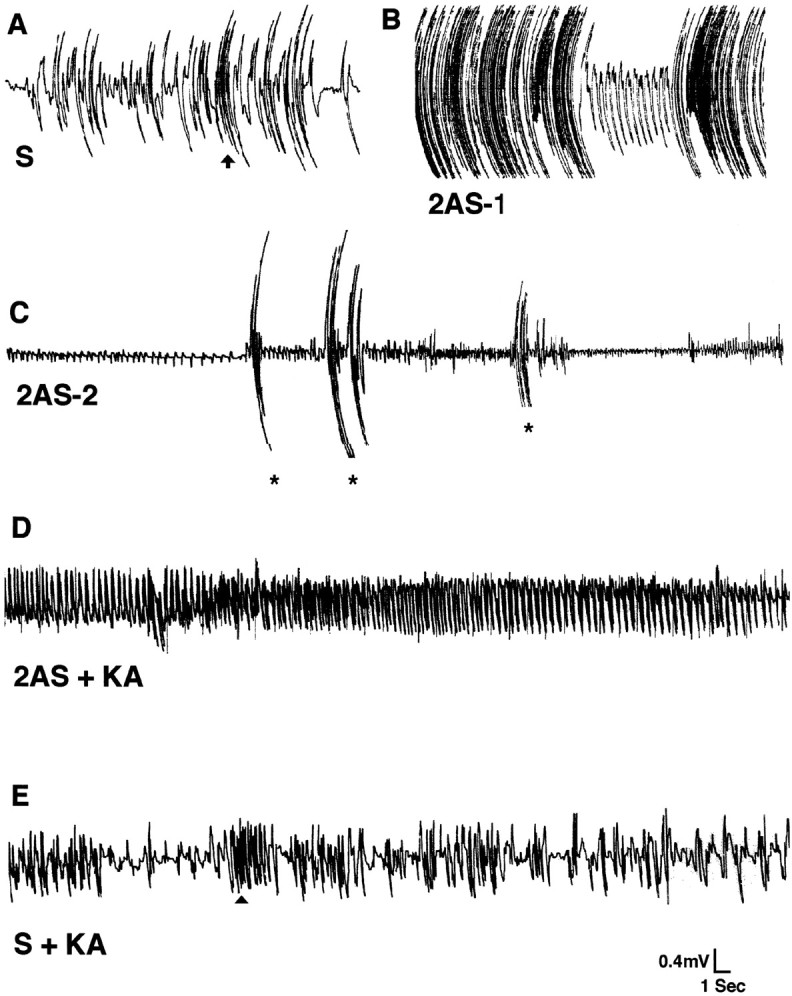Fig. 2.

EEG recordings after GluR2(B) knockdown from ipsilateral pup hippocampus in a freely moving recording chamber.A, S-ODN (S) baseline EEG with normal movement artifacts showing a typical short-lasting (<1 sec) scratching event (vertical arrow) (left portion). B, GluR2(B) AS-ODN-treated pup (2AS-1) exhibited vigorous and continuous scratching that produced high-frequency, high-amplitude movement artifacts; occasional spikes occurred between scratching events (right portion). C, In another GluR2(B) AS-ODN-treated pup (2AS-2), convulsive seizure-like behavior including body tonus with forelimb extension and laying on one side occurred and was associated with high-frequency low-amplitude rhythmical activity of increasing size. Large-movement artifacts shown represent intermittent bilateral jerking movements (asterisks). D, In GluR2(B) AS-ODN-treated pups lacking the phenotypic behavior (2AS + KA), a low concentration of KA produced high-frequency rhythmical oscillations associated with tonic-clonic seizure behavior.E, In an S-ODN-treated pup (S + KA), a subconvulsive KA dose produced classic automatisms (e.g., wet dog shakes, arrowhead) but not the high-frequency rhythmical oscillations.
